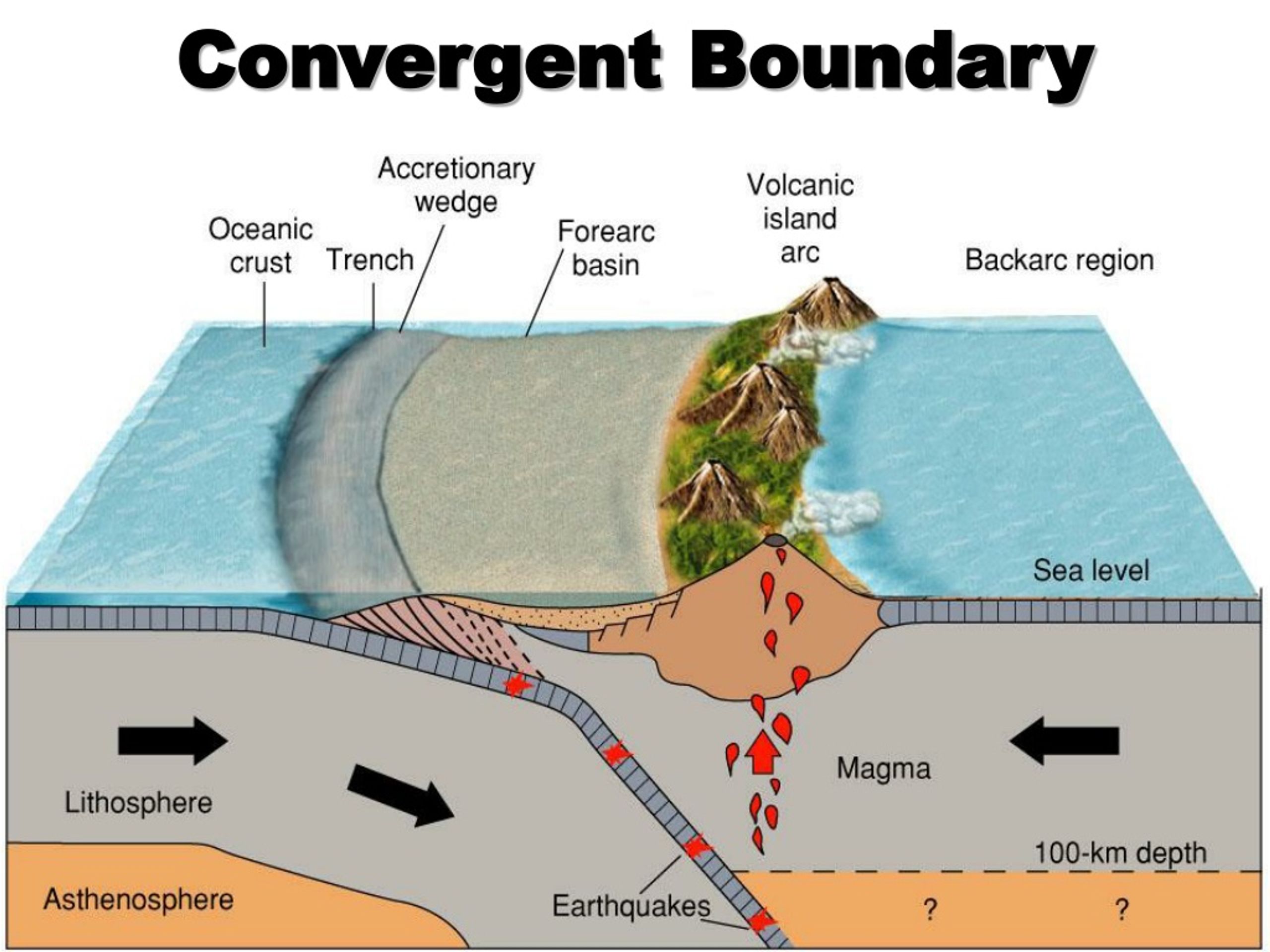
The Washington-Oregon coastline in the United States is the result of convergent plate movements. The thinner and denser oceanic plate is pushed inside by a thicker and less dense oceanic plate. On the other hand, when the plates slide past each other horizontally, it refers to a transverse boundary.

When plates pull away each other it refers to a divergent boundary. This can result in earthquake production, volcanic activity, and crust deformation. The convergent plate boundaries depict the locations where the plates move towards each other resulting in a collision. To converge is to move towards each other. The convergent boundary as its name suggests refers to the convergence of two plates. These are a divergent boundary, convergent boundary, and transformed boundaries. In geographical terms, the plates have three types of boundaries. The word plates do not make these land pieces flat as the Earth is an oblate sphere. The movement of these plates occurs in the plasticine mantle. These plates move in continuous motion at a very slow pace. The crust and the upper layer of mantle form fractures portions of land called plates or lithospheric plates. It is the visible surface over which organisms live. The crust forms the lithosphere of the Earth. The core is the innermost part of the earth, the mantle is the middle part of the earth, and the crust is the uppermost layer of the earth. The Earth is composed of three layers called core, mantle, and crust. It is represented as a collision of two plates. The movements are of various types and convergent is one of them. Each of the layers is composed of an oceanic crust which is superficial to the outer layer of the mantle. These plates move continuously across a deeper plasticine mantle. When you are ready, move on to the Got It? section to assess what you have learned.The Earth’s crust and upper mantle are fractured into plates called Lithospheric plates.

The plate that is pushed on top can form mountain ranges and valleys above water, and ocean trenches below water.Ĭonvergent plates also have been known to cause earthquakes above and below water.

The effects of convergent boundaries vary depending upon where the convergent boundary occurs. The plate that slides to the bottom is melted by magma. Typically, the plate that is denser will move on top of the plate that is less dense as the plates push into one another. Convergent boundaries occur when two plates move towards, and bump into, one another. Think about how this definition could relate to plate tectonics.Ĭonverge means that things move or come together. If you do not have a dictionary near you, use Merriam-Webster’s Dictionary. Look up the term converge in a dictionary. In today’s lesson, you will learn about convergent boundaries. There are three different terms used to describe the way tectonic plates interact with one another: convergent boundaries, divergent boundaries, and transform boundaries. That means, when tectonic plates are moving, they are bumping into and against one another. You have probably noticed that there are not giant gaps all over the planet between all of the earth’s tectonic plates. In the previous Related Lesson, found in the right-hand sidebar, you learned that the earth is made up of large blocks called tectonic plates, and those plates are constantly moving.īefore you dive into this lesson, review the following questions:


 0 kommentar(er)
0 kommentar(er)
